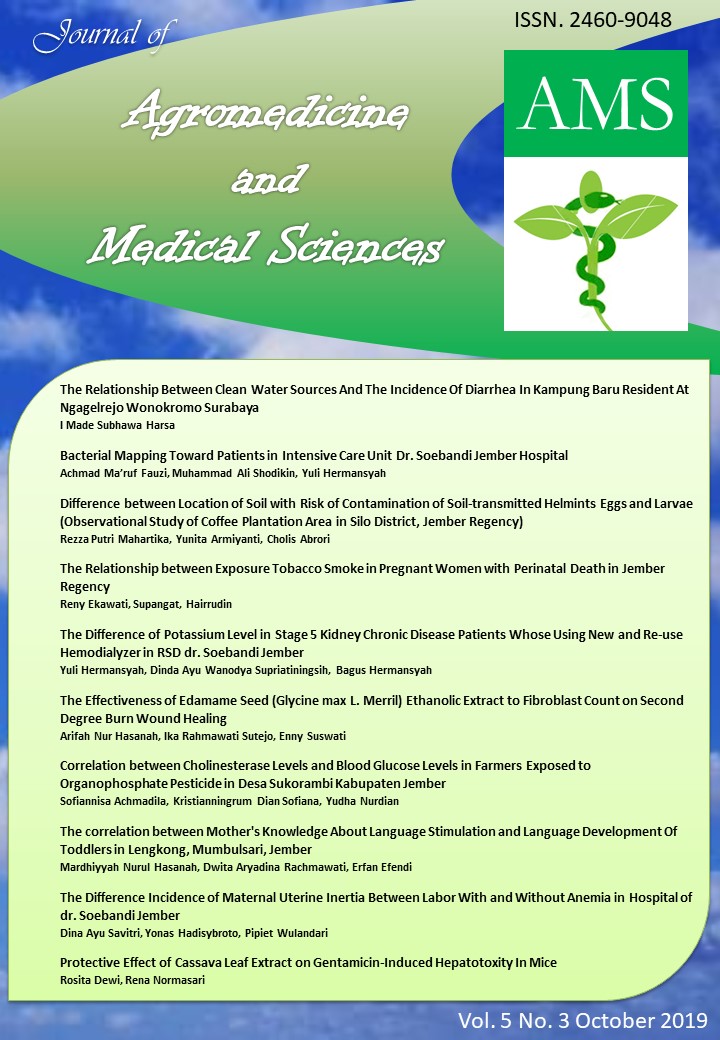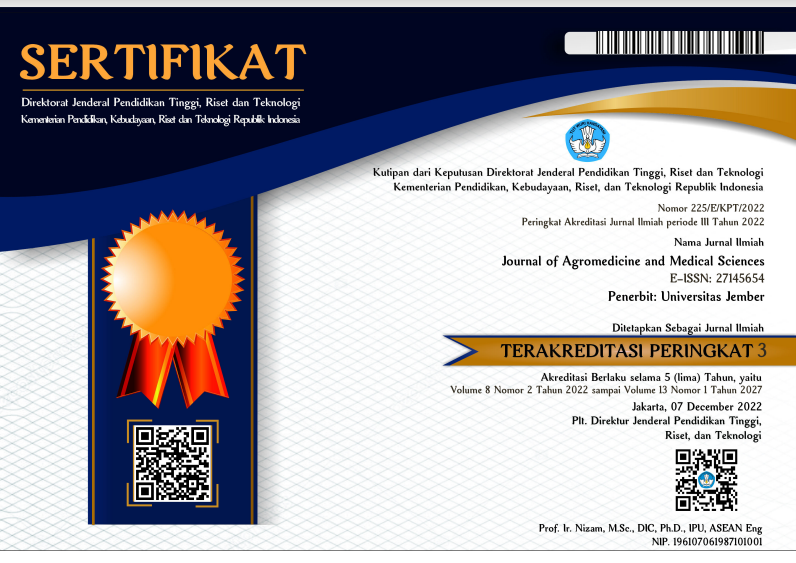Bacterial Mapping Toward Patients in Intensive Care Unit Dr. Soebandi Jember Hospital
DOI:
https://doi.org/10.19184/ams.v5i3.6821Abstract
Intensive Care Unit (ICU) a part of the hospital with specialized staff and equipment specially to the observation, care and treatment of patients suffering from life threatening complications. The importance of knowing the mapping of bacterial is to know the types of bacterial and the resistance of bacterial to the therapy that will be given. The research used is descriptive by taking primary data. Criteria of research sample in the form of blood culture in patients in ICU RSD. Dr. Soebandi Jember. Sampling method is by using total sampling technique. The results is S. xylosus (55.60%), S. epidermidis (11.10%), Enterobacter cloacea (11.10%) and Stenotrophomonas maltophilia (11.105). Sensitivity test results of Staphylococcus xylosus bacteria showed resistant to class III cephalosporin group, Erythromycin, penicillin, clindamycin and macroloid. While the sensitive to chloramphenicol, linezolid, glikopeptida and vancomycin. The results of the antibiotic sensitivity test of Staphylococcus epidermidis, Enterobacter cloacea, and Stenotrophomonas maltophilia are sensitive to tetracycline and aminoglycoside antibiotics. Meanwhile, antibiotic sensitivity test of Staphylococcus epidermidis and Streptococcus sp are resistant to antibiotic penicillins, fourth generation cephalosporin, erythromycin, azithromycin. Streptococcus sp and Stenotrophomonas maltophilia are resistant to ceftriaxone antibiotic.























